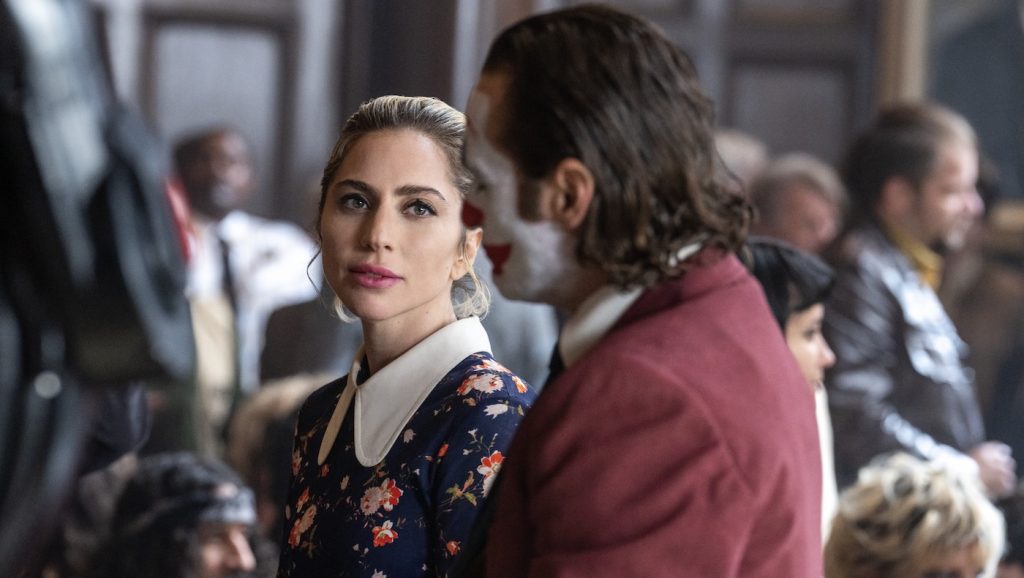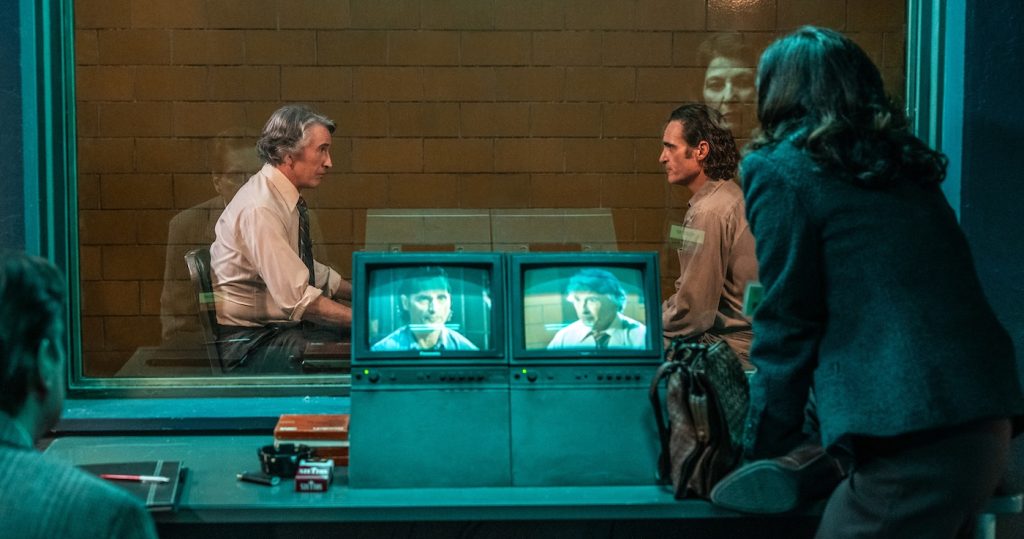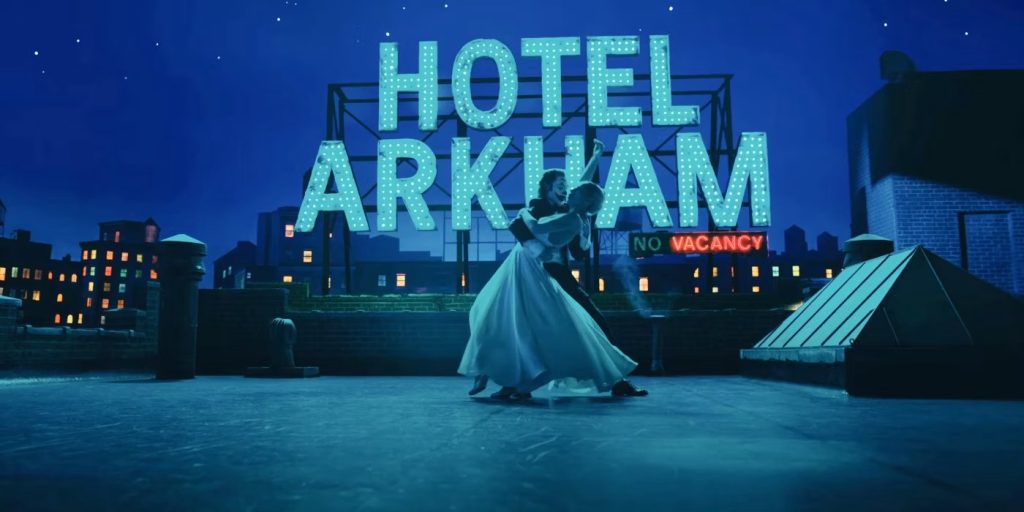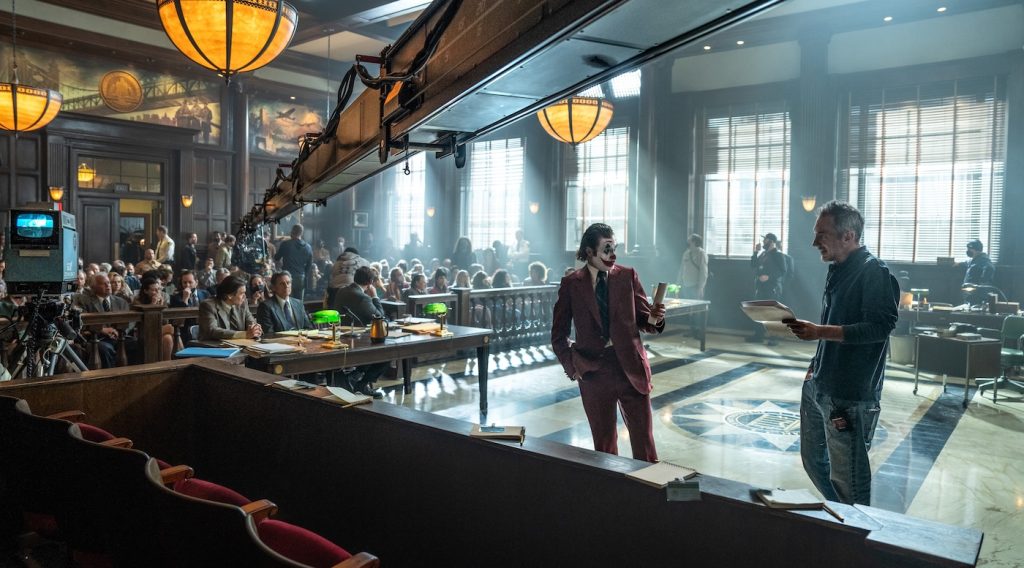“Joker: Folie À Deux” Production Sound Mixer Steven Morrow Dissects 3 Essential Scenesew
“We tried to do everything we could to make the best sounding movie,” says production sound mixer Steven Morrow about director Todd Phillips’ Joker: Folie À Deux. “Larry’s cinematography is beautiful, and with the amount of effort and time he puts into it, we wanted to put that kind of energy and emotion into our work for the audience and for Todd.”
For the much-anticipated sequel to the Oscar-winning film Joker, the story takes a musical turn as Arthur Fleck finds himself locked up at Arkham State Psychiatric Hospital awaiting trial for violently shooting late-night host Murray Franklin (Robert De Niro). Struggling with his identity, Arthur uses song and music as a means of expression. His life changes after meeting Lee Quinzel (Lady Gaga), with whom he falls head over heels in love.

Morrow reunites with both Phillips and Lady Gaga from when he mixed A Star Is Born, where Phillips served as a producer. In approaching how to record the singing in Joker: Folie À Deux, Morrow and the sound team, which included boom operator Michael Kaleta and utility Bryan Mendoza, worked closely with executive music producer Jason Ruder. The idea was to record all the vocals live. “I actually got a call from Jason early on before they announced Lady Gaga was going to be the female lead,” notes Morrow. “And what we ended up doing is getting everybody comfortable with the songs, finding the rhythm of the songs, and getting the understanding of what songs Gaga was going to do live on set.” What transpired from the early prep was a workflow that allowed them to record the actors singing live without sacrificing the tempo, energy, or emotion of scenes.
Below, Morrow dissects three of the most important sonic ideas in Joker: Folie À Deux.
THE INTERVIEW
Years after the events in Joker, Arthur Fleck is being held at Arkham State Psychiatric Hospital. Comatose from a daily dose of drugs, his frail body shuffles the halls as if a stiff breeze could knock him over. His lawyer, Maryanne Stewart (Catherine Keener), is his only lifeline to potential criminal freedom. Her defense: Arthur has a “split personality.” A step in publically shaping that narrative is an interview between Arthur and high-profile news anchor Paddy Meyers (Steve Coogan). The scene becomes a pillar to revealing who Arthur truly is.

We get all the period microphones from the props department. We don’t mess with a period mic often because trying to make it usable can be difficult for modern moviemaking. There’s so much electrical buzz around sets now with all the LEDs, dimmers, and everything else like that. So, you end up taking an old mic and putting a new mic inside it.
LIVING IN A FANTASY
Arthur discovers himself through song and music, which is explored on-screen through fantasies, including one on a rooftop, inside the courtroom, and at a wedding chapel. The sequences shape the story of his inner self, and to pull them off, collaboration among camera, sound, choreography, and the actors is required to make them transcendent yet immersive.
We knew Lady Gaga was going to do everything live because that’s just how she works. That’s when the music team, Jason, George, and Randall, came up with the idea that Gaga and Joaquin should have their own pianist to play along to the actors singing. This way, the actors could drive the speed of the scene and the speed of the song instead of listening to it on a playback track and trying to keep up with it. Their own pianist allowed them to perform the song how they wanted on each take.
How did you pull it off technically?
Each pianist would play next to us, and we would take the audio from the piano and feed it into an earpiece the actors were wearing. This way, if there was dialogue in a scene, we could record it cleanly and isolate it from the music. We also sent a feed of the actor’s performance back to the pianist so that they could listen to the scene as it was going on because they needed to hear what they were saying as well. Then, we had video monitors for them so they could watch what the camera was seeing.
We also set up a separate monitoring system for the music department with hardline headphones and good video monitors so they could sit in and listen to what we were recording, what we were feeding the actors and the actors’ live performances. We fed any other person who needed to hear the musical performance through Comtex.
What about when Arthur first meets Lee in the music room of Arkham Asylum? There’s another character playing the piano as they sing along. Did you approach recording the sound the same way?
We did it a little differently. In that scene, there’s a baby grand piano that Harley sets on fire later on. We asked the art department to send out the piano to get digitized, which allows you to pull a lever to disengage the keys, but you can still press down on them. So, as the piano is playing, we don’t hear it in the room, but it is being digitized. We can record what they are playing and send it back to the pianist and all the actors in the room with an earwig so everybody can sing along to what’s being played.
A fun thing about that scene is that the pianist who’s playing is actually Lady Gaga’s pianist, Alex Smith, who’s on tour all the time with her. So he’s the one in that scene playing to all the patients.
So that setup allows you to record the piano, the singing, and any dialog separately?
Yes. That was a trick we learned from Gaga on The Star is Born. And so, from that point forward, anytime we do any of these big piano scenes we try to use a digital grand piano. This way, if you actually want them to be playing, they can actually play, and if you want to hear what they’re playing later, we can isolate it. Otherwise the other way is for them to be miming to a dead piano.
One of the original songs written and performed by Lady Gaga is “Folie à Deux,” which plays over a rooftop sequence where they dance together. Do you know that song came about?
That was one of those fascinating moments in the movie because she’s going to be singing, and they’re going to be dancing. It’s this beautiful fantasy sequence. Gaga actually came up with the vocals for that during rehearsal the day before, I believe, and recorded the vocals on a laptop with Noah Hubbell, who’s our audio playback guy. If I recall correctly, she was there during rehearsals then said I have these lines of vocals, let’s record it. They just recorded it using the laptop microphone as a temp track so they could rehearse it. It was one of those movie moments where you have to be ready for anything. And we kind of have everything available all the time because you don’t ever want to scramble.

REVEALING JOKER
When the case against Arthur turns unfavorable, he fires his attorney and chooses to defend himself…as the Joker. This dramatic turn highlights Arthur’s struggle to find his place between reality and fantasy.
We knew going in that each scene would have multiple cameras and a lot of atmosphere, like fog and streaks of light. This looks beautiful, but if you put a boom pole through it, you can see a shadow even if you’re above. So we knew we had to plant radio mics and have radio mics on vocals throughout the whole movie.

Since radio mics sound closer to a subject, how did you bring in the location sounds?
With the courtroom scenes, all the newscaster cameras broadcasting the trial were live cameras filming, so we had to record the dialogue with radio mics. There was no easy way to put a boom in there. So the thing we did to make the space more alive, or any of the sets where there was going to be radio mics, was to plant mics. We had about four in every room, kind of in the corners, to capture the room sound and to give it a little bit more life and distance for moments that seemed a little too close in your ear.
There’s a small moment where Arthur speaks into a courtroom mic on the table where he sits. Did you want to make that practical?
Yes, we thought it’d be good to have that be an actual live mic. So we fed that through a speaker in the room, so that loud feedback thing happened in the courtroom, which we thought was pretty funny. That was kind of our choice, and Todd liked it. So that’s what we went with.
How did you approach the transition between courtroom dialogue and song? For instance, when Arthur sings “The Joker.”
There’s a company called Sound Devices that makes these really small wireless transmitters. But the cool thing about them is you can control the gain or volume that the transmitter is sending back to you remotely. So when Gaga is going to whisper a line and then go into a ballad, we can adjust it on the fly remotely so that the transition from her being super quiet to singing doesn’t crush the mic. This is incredible compared to how we had to do before, where we had to pick and choose what we wanted to sacrifice. With the new systems that are out now, you don’t have to sacrifice quality. I don’t know how we would have done the movie otherwise.
Joker: Folie À Deux is in theaters now.
For more on Joker: À Deux, check out these stories:
“Joker: Folie À Deux” Cinematographer Lawrence Sher Dissects 3 Essential Scenes
The Villain Returns to Venice as “Joker: Folie à Deux” Makes its World Premiere
New Joker: Folie à Deux” Teasers Unveil Gotham’s Killer New Crooners
Featured image: Caption: (L to r) JOAQUIN PHOENIX as Arthur Fleck/Joker and LADY GAGA as Lee Quinzel in Warner Bros. Pictures’ “JOKER: FOLIE À DEUX,” a Warner Bros. Pictures release. Photo Credit: Niko Tavernise



